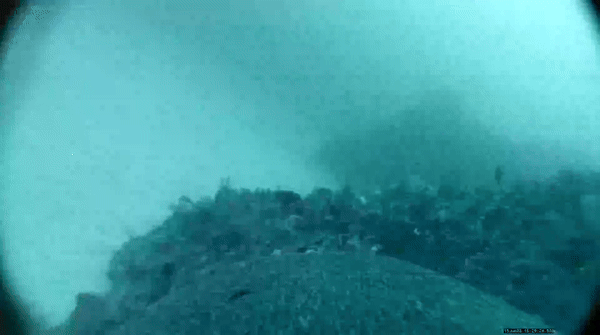Scientists Enlist the Help of Sea Lions to Reveal a Unique View of the Ocean Floor
Australian researchers glued satellite-linked GPS cameras to the animals’ backs to capture footage that could be vital to marine conservation efforts

Exploring the world’s seabeds is a complicated, expensive and long process. Typically, researchers send remotely operated vehicles into deep waters, where they face extremely high pressures and low visibility. To get around these obstacles, a team of Australian scientists decided to enlist the help of some unexpected collaborators who are well-qualified for the task: sea lions.
The premise is simple: glue satellite-linked GPS video cameras to the backs of Australian sea lions to film places humans can’t reach. A new study describing the research was published this week in the journal Frontiers in Marine Science.
Affixing cameras to the animals is “quite a quick procedure,” first author Nathan Angelakis, an ecologist and evolutionary biologist at the South Australian Research and Development Institute, tells Science’s Catherine Offord. “They get a little dart that puts them to sleep for about an hour. We use small pieces of neoprene—wetsuit material—that we glue our cameras and tracking devices onto. And then we glue those little patches onto the fur of the sea lions.”
In all, the equipment measured less than 1 percent of each animal’s body weight, and any residue on the sea lions’ fur was expected to come off with the next molt. The team got their procedure approved by the University of Adelaide’s Animal Ethics Committee as well as government groups related to animal welfare and the environment.
The sea lion camera crews were made up of eight healthy adult females from two colonies—one on Kangaroo Island off the coast of Adelaide and the other on the western Eyre Peninsula nearby.
“We deployed the instruments on adult females so we could recover the equipment a few days later when they returned to land to nurse their pups,” Angelakis explains in a statement.
The result? Eighty-nine hours of recordings at depths between 16.4 and 360.9 feet. The footage documents sea lions swimming about 348 miles, as well as hunting and interacting with their habitat. The animal-borne cameras allowed scientists to experience the seafloor from a predator’s perspective, as opposed to the traditional anthropocentric view.
/https://tf-cmsv2-smithsonianmag-media.s3.amazonaws.com/filer_public/09/c9/09c9c773-51aa-4c5b-bd9d-e9c664b39485/sea_lion_camera_on_back.webp)
“I can watch this stuff for hours,” study co-author Simon Goldsworthy, leader of the Marine Ecosystems Program at the South Australian Research and Development Institute, tells the Guardian’s Graham Readfearn. “It’s like the best slow TV ever. You just don’t know what you’re going to see next.”
Goldsworthy adds that the cameras could be a “game-changer” in the study of Australian sea lions, an endangered species whose population has declined by more than 60 percent in the last four decades. For example, the footage provided data on the animals’ foraging behavior, including the fact that individual sea lions have different food preferences. The cameras even caught the first direct evidence that Australian sea lion mothers teach foraging skills to their pups through social learning, Angelakis tells Science. Information on which habitats the animals use could prove vital to conservation efforts for the species.
The sea lion videographers also revealed previously unknown seafloor environments.
“With the data we’re collecting, we’re essentially exploring new parts of the ocean that haven’t been mapped,” Angelakis tells Nature News’ Helena Kudiabor. The team was able to identify six benthic habitats in the deepest waters, which they termed macroalgae reef, macroalgae meadow, bare sand, sponge/sand, invertebrate reef and invertebrate boulder. Through the videos, they could gauge biodiversity in these regions.
The team then used the video to test an artificial intelligence model, which was meant to predict seafloor habitats based on sea-surface temperature and distance from the coast, writes Nature News. The model proved to be over 98 percent accurate, so they used it to predict more habitats along the continental shelf of southern Australia.
“One of the real powers of the study is taking the data we collected to predict other unknown areas,” Angelakis tells Nature News.
However, researchers point out that the sea lions might have missed some spots. The limited number of cameras was not “an optimal way to quantify and fully capture habitat variations and consistencies,” Katie Dunkley, a marine zoologist at the University of Cambridge in England who was not involved in the study, tells the Washington Post’s Annabelle Timsit. But it does serve as a “proof of concept” for future work with sea lion videographers, she adds.
The camera-toting animals are “giving us a window into their world that we haven’t had before,” Goldsworthy tells the Guardian.

